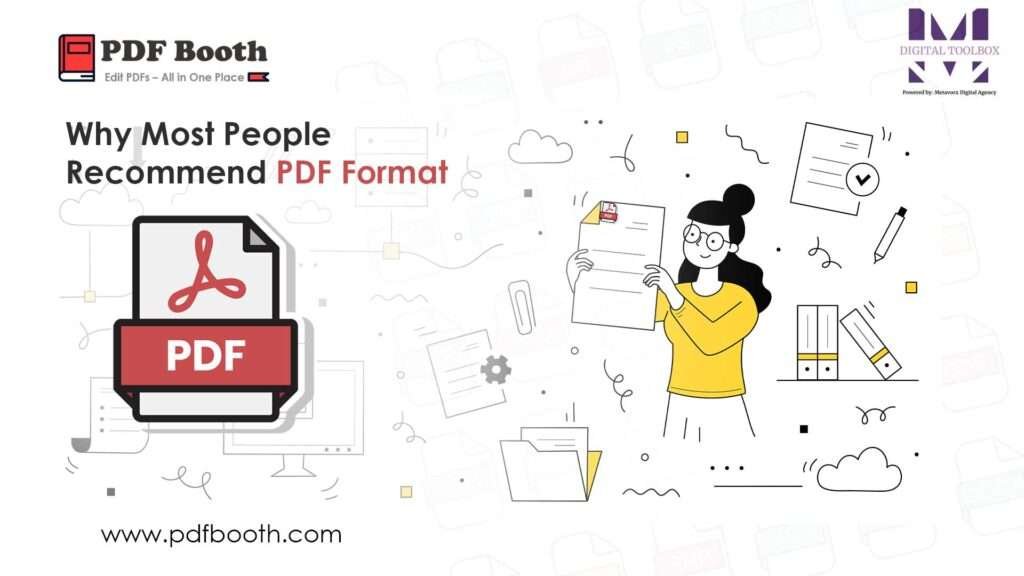Why Most People Recommend PDF Format

In today’s digital age, sharing documents online has become a routine task for businesses, students, and professionals. Among the many file formats available, PDF (Portable Document Format) has emerged as the most recommended and widely used option. But why is this the case? Let’s explore the key reasons why PDF is preferred over other formats.
1. Universal Compatibility
PDF files can be opened on any device—Windows, Mac, Linux, Android, or iOS—without changing the format or layout. Unlike Word or Excel documents, PDFs maintain their appearance regardless of the software or platform being used. This makes them ideal for sharing documents across different systems.
2. Preserves Formatting
One of the biggest advantages of PDFs is that they preserve the exact formatting of your document. Fonts, images, graphics, tables, and other elements remain consistent, ensuring that your document looks professional when shared with others.
3. Compact File Size
PDF files are usually smaller in size compared to other formats, making them easier to share via email, upload to websites, or store in cloud storage. Compression techniques help reduce file size without compromising quality, which is particularly useful for large documents.
4. Secure and Reliable
PDFs offer advanced security options such as password protection, encryption, and digital signatures. This ensures that sensitive information stays safe, and unauthorized changes are prevented, making it ideal for official documents like contracts, invoices, and reports.
5. Supports Multimedia and Interactivity
Modern PDF files can include interactive elements like hyperlinks, buttons, forms, videos, and audio clips. This makes them versatile for presentations, e-books, manuals, and other multimedia-rich documents.
6. Easy to Print
PDFs are designed to be print-ready. No matter which printer or device you use, PDFs ensure high-quality print output, preserving the original layout and content.
7. Widely Accepted in Professional and Academic Settings
Many organizations, universities, and government agencies prefer PDFs because they are standardized and professional. Most official documents, applications, and submissions require PDF format, highlighting its credibility and reliability.
Conclusion
PDF has become the go-to format for sharing and storing digital documents due to its universality, security, reliability, and professional appearance. Whether you are sending resumes, reports, e-books, or presentations, using PDF ensures that your content is accessible, visually consistent, and secure. It’s no wonder most people recommend PDF format over other alternatives.
FAQs:
Can I edit a PDF file?
Yes, but you may need specialized software like Adobe Acrobat, Foxit, or online PDF editors. Basic editing in standard PDF readers is usually limited.
Are PDFs compatible with mobile devices?
Absolutely. PDFs can be opened on smartphones and tablets with built-in readers or free apps like Adobe Acrobat Reader.
Is PDF better than Word or Excel?
For sharing and printing documents while maintaining formatting, PDFs are more reliable. Word or Excel is better for editing and collaboration before finalizing the content.
Can PDFs contain interactive elements?
Yes, PDFs can include hyperlinks, forms, buttons, audio, video, and other interactive features, making them versatile for various use cases.
